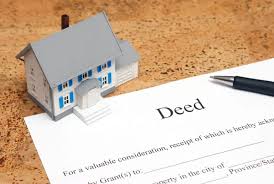Acquisition mortgage and owner financing are two names for the seller financing technique. But in its simplest terms, it refers to a type of real estate lending transaction in which a property owner, whether a car or house, also acts as a mortgage lender. Because of this particular circumstance in the property selling procedure, a financial institution is not required to manage financing agreements and negotiations. Seller financing on homes is discussed in this article.
What Is Seller Financing?
“Seller financing” is an agreement between the property investment buyer and seller.
Some real estate agents and property owners support seller financing as a strategy to increase the number of mortgage options available to buyers, reduce the paperwork involved in home purchases, and increase lending profit margins. Even though it effectively involves a seller providing a buyer with direct financing, seller financing has advantages and disadvantages just like any typical mortgage alternative.
How Seller Financing Works
A down payment is typically made to the seller as part of a seller financing agreement when a property or business is being considered for purchase. Similar to other financing plans, seller financing calls for the buyer to pay the seller in regular monthly payments or installments (the time frame may change based on the terms agreed upon) at an agreed-upon interest rate. Until the loan is fully repaid, the buyer will continue to make payments to the seller.
In deals involving seller financing, the seller essentially presents the buyer with an alternative to bank financing. Such a deal benefits the seller, since, depending on the buyer’s creditworthiness and motivations to ensure they make the payments, it might be seen as an investment with certain profits.
The advantage for the buyer is that, even if they might not be able to get a loan, they can now buy the house they want thanks to a deal with the seller. In addition, the seller has the right to take back the asset in the event that the buyer stops making payments. Typically, the asset or assets being sold serve as the loan’s security.
Types of Seller Financing
- Additional Lien/Junior Mortgage
- Wrap-Around
- All-inclusive mortgage
- Land contract
- Rent to Own
#1. Additional Lien/Junior Mortgage
Often, the seller is reluctant to get into a seller-financing agreement with a buyer due to the risk involved, so instead, the buyer is given the option of taking out a second mortgage, meaning that the majority of the financing will come from the bank with the remainder coming from the seller. The buyer makes two payments under this sort of contract, the first to the bank and the second to the seller.
#2. Wrap-Around
A wrap-around mortgage offers the seller a strong chance to increase their profit.
Let’s assume the seller has a mortgage that he hasn’t paid off entirely, in that instance, he offers a seller financing option when selling real estate. He can charge a higher rate on the purchase price, require a smaller down payment, make ongoing payments on his bank-issued mortgage, and earn a greater return rate.
#3. All-Inclusive Mortgage
In this scenario, the owner transfers the house to the buyer via an all-inclusive trust deed and accepts a promissory note for the remaining balance of the purchase price, less any down payment that may have been made.
#4. Land Contract
In this kind of agreement, the buyer receives an equitable stake in the property rather than the ownership title. A legally binding transfer of ownership from the seller to the buyer only occurs after the final payment has been made within the terms of the written contract.
#5. Rent to Own
The buyer has the choice, but is under no duty, to purchase real estate from the seller; but, with the down payment and ongoing rent payments, the buyer gains the right to own the property.
Advantages and Disadvantages of Seller Financing for Sellers
Advantages
- Save Money: Sellers who arrange for financing should avoid paying fees and the costs of listing and selling a home, especially when working with known purchasers. A steady income source is provided by principal and interest payments.
- Higher Returns: Over time, the seller’s financing agreement offers better returns than a single, long-term capital gain.
- Attract More Buyers: Offering seller financing in a buyer’s market may help a seller stand out from the competition by luring in customers who will have problems getting a loan.
Disadvantages
- Risk Analysis: The seller must assess the risk associated with seller financing and make the necessary choices about participation.
- Loss of value: Prior to the contract’s expiration, the buyer might neglect the property and allow it to become decrepit. If this occurs, “you’re returning it in worse condition than you sold it in.” Therefore, before you make the property available to the purchasers, be sure they are enthusiastic about it, have the money to acquire it, and are eager to do so.
- Repair cost: It’s possible that the seller will need to make improvements and repairs to the property if a buyer defaults.
The Advantages and Disadvantages of Seller Financing for Buyers
Advantages for Buyers
If buyers choose to purchase an owner-financed property, they may additionally benefit in a number of ways, including
- More alternatives for financing, especially for customers with modest incomes
- Quicker and less expensive closing: With a traditional lender, the closing procedure entails a mountain of paperwork, along with various costs and conditions. The amount of documentation and underwriting required for an owner-financed purchase is significantly less.
- More flexible agreement terms
Disadvantages for Buyers
As alluded to above, seller financing for buyers is not without its potential drawbacks as well. Items you may wish to keep in mind as you consider whether to pursue this form of real estate financing option are as follows:
- Possibly Greater Costs: When you are unable to obtain financing, the seller is in a stronger position and may demand that you pay an above-market value for the home and incur high-interest rates.
- In the event that the seller doesn’t pay the senior financing mortgage, the buyers are still at risk of foreclosure.
- Deadline for Payment: The contract may call for a final downpayment, which would require you to obtain a mortgage.
Seller Financing Homes
One of the alternatives you could find when looking to finance a house purchase is seller financing on homes. A seller provides financing when a seller provides a loan to a buyer rather than a traditional mortgage lender. The loan may cover all or part of the cost of purchasing a home.
For a home buyer who has bad credit or is having other difficulties qualifying for a typical mortgage, seller financing, also known as owner financing, may be an option. However, using seller financing to purchase a home could come with a number of hazards.
Furthermore, the buyer is often solely responsible for all financing when purchasing a home. Following the loan’s approval and payment of all costs, the seller picks up a check or gets a transfer. The seller-financing on homes option, however, may be appealing to bold sellers who are open to non-traditional forms of financing.
However, seller financing on homes has a special procedure as well as significant elements to take into account.
#1. Employ an Inspector
Both the buyer and the seller should employ their own evaluator to ascertain the value of the home. Both the buyer and the seller request a home appraisal to establish a reasonable asking price for the property. These are some methods for finding a realtor.
- Ask a mortgage business, a bank, or a realtor for recommendations on seller financing on homes.
- Get in touch with the licensing agency in your state.
#2. Work With a Real Estate Lawyer
A real estate lawyer needs to work closely with both sides. A real estate lawyer can produce all the necessary paperwork. Additionally, the lawyer can protect your interests.
#3. Consult a Residential Mortgage Loan Originator for Guidance
You can receive guidance from a residential mortgage loan originator on how to handle seller financing on homes in a way that is open and in accordance with the law. When your owner finances a house, you are essentially giving the buyer a loan up until the point at which they have finished making mortgage payments.
Seller Financing Car
Consider seller financing the car if you have one to sell but don’t need the full lump sum of money immediately. The owner of the car or another eligible type of collateral keeps the title under this arrangement. The buyer receives ownership of the vehicle and follows an established payment schedule. The seller has the right to seize the collateral if the buyer defaults.
Furthermore, seller financing allows for the completion of any business transaction, including the sale of a vehicle (a car) from one person to another. Owner financing—sometimes called seller financing—is when the seller of a given product extends credit to the buyer of that product and holds a promissory note for the loan. The opposite of owner financing is bank financing, where the seller receives payment in full from a bank and the borrower repays the lending institution. If you are going to owner-finance your car, there are some important documents you should use and some precautions you should take.
#1. Carry Out a Credit Check
If you are the seller, you should run a credit check on someone when financing a car if you are the seller. There are many different credit check services available, and it just costs a few dollars to run someone’s credit report. When looking into a possible borrower, you should also confirm current employment with a recent paycheck.
#2. Make a Sizable Down Payment
Make sure you receive a sizable down payment if you’re planning to offer the seller financing for a car. Many banks won’t offer auto loans without a 15%–20% down payment. When offering seller financing on a car, you should be taking on less risk than a bank would, so think about asking for 25% or more. In order to make up for the risk you’re taking, you should also charge greater interest rates than a bank would for an equivalent auto loan.
#3. Use a Bill of Sale to Record Your Transaction
A receipt is required for every purchase as confirmation that the agreed-upon transaction actually occurred. A bill of sale is a receipt for a business transaction. The make, model, identification number, and mileage of the vehicle should all be listed on the bill of sale.
#4. Make a Promissory Note Official
A personal loan agreement, or promissory note, specifies the terms of the loan as well as the interest rates that will apply. The promissory note is also the legal instrument that can be used to file a lawsuit against the debtor and demand repayment of the loan if the borrower defaults on it.
#5. Transfer the Ownership
Once the bill of sale and promissory note are ready, proceed to your local government to transfer the title of the vehicle. The purchaser shall pay all taxes and fees prior to the transfer of title. The seller must show the government evidence of a clear title before the borrower can take over.
Furthermore, you should be cautious before giving them a loan because the majority of car buyers who want seller financing have bad credit.
Mortgage Seller Financing
A mortgage is a contract that outlines the real estate asset’s pledge as collateral for a loan or other debt obligation. A mortgage and a security lien are often signed by the buyer on behalf of the lender when mortgage and bank lenders finance the purchase of the property. The mortgagee is responsible for making the required repayments; the borrower is the owner of the mortgage and claim.
A mortgage seller financing is a contract that the seller and buyer of a property enter into, making the seller the mortgagor. The seller finances the acquisition rather than utilizing a bank, credit union, or direct mortgage lender. The buyer then pays the vendor, or whoever the seller has designated directly. It’s possible for a seller to act as the first mortgage provider and finance 80–100% of the transaction. As an alternative, the seller may supply a second mortgage of between 5 and 20 percent while a bank handles the first mortgage.
Purpose of Mortage Seller Financing
A mortgage seller financing is an alternative if a property has problems that prevent it from fulfilling valuation requirements and thus qualifying for a conventional or government loan. It is utilized in a buyer’s market to increase the desirability of the property or to allow purchasers who do not meet the requirements for conventional financing to purchase the home. If the purchaser lacks adequate funds for a down payment on the property, the seller may offer a second mortgage. As a personal investment alternative to investing cash from an outright sale, sellers will occasionally offer financing for investment properties.
Conclusion
For buyers who are unable to obtain a conventional commercial mortgage loan owing to their financial situation, their credit history, or the type of property they are purchasing, seller financing is a feasible option. I firmly advise you to look into all available commercial real estate finance options before deciding on owner financing.
Who holds title in seller financing?
The seller continues to hold the property’s title until full loan repayment has been made by the buyer.
Is seller financing a good idea?
The answer is totally based on your circumstances and requirements. Seller financing may open up more loan options for you as a house buyer, just as it may give home sellers an additional chance to profit financially.
What is a seller-financed transaction?
In seller financing, the seller serves as the lender. Instead of handing over cash, the seller gives the buyer credit sufficient to cover the cost of the homeless down payment.






